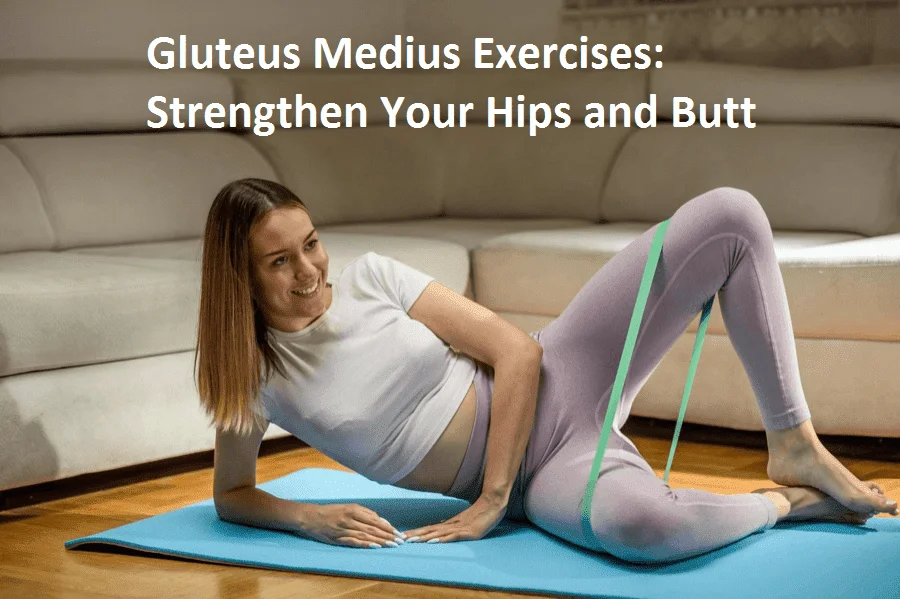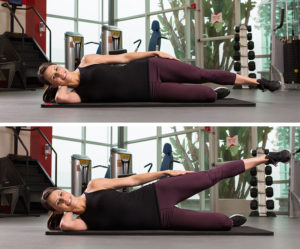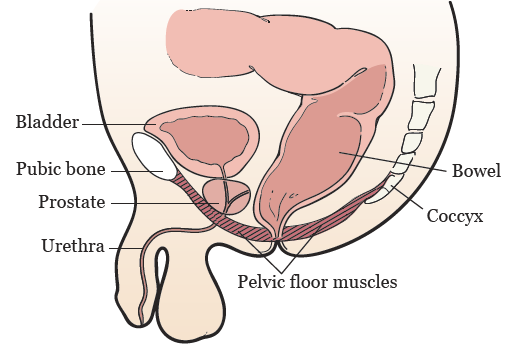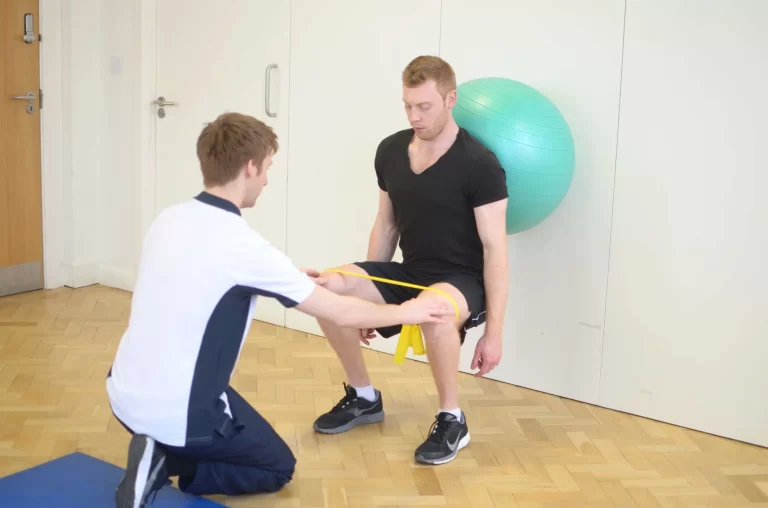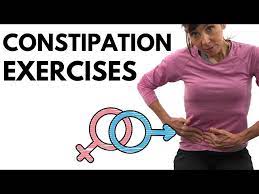Gluteus Medius Exercises: Strengthen Your Hips and Butt
What is Gluteus medius muscle?
The Gluteus medius muscle is one of the three muscles that make up the gluteal muscles in the buttocks. It is located on the lateral side of the hip and runs from the ilium (the upper part of the hip bone) to the greater trochanter of the femur it is the bony prominence on the side of the thigh bone.
The gluteus medius muscle has several important functions. It helps to stabilize the pelvis during walking, running, and other lower-body movements. It also plays a role in the abduction of the hip, which is the movement of the leg away from the midline of the body. Additionally, it assists in the internal and external rotation of the hip joint.
When the gluteus medius muscle is weak or injured, it can lead to various issues. These can include hip pain, instability, difficulty walking or running, and altered gait patterns. Weakness or dysfunction of this muscle can also contribute to lower back pain and knee problems, as it is an important muscle for maintaining proper alignment and stability throughout the lower body.
Treatment for gluteus medius issues typically involves exercises to strengthen and stabilize the muscle. Physical therapy may be recommended to address any underlying imbalances or weaknesses. In some cases, medical interventions such as injections or surgery may be necessary.
Exercise of gluteus medius muscle
There are two types of exercise for gluteus medius muscle:
- Strengthening of gluteus medius muscle
- Stretching of gluteus medius muscle
Strenghtening of gluteus medius muscle
Lateral Banded Walks
Lateral banded walks, also known as lateral band walks or monster walks, are a specific exercise that targets and strengthens the gluteus medius muscle. This exercise is often used in physical therapy and strength training programs to improve hip stability, strengthen the gluteal muscles, and correct any imbalances or weaknesses in the lower body.
HOW TO DO IT:
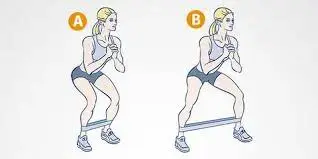
- Slide a small loop resistance band surrounding the ankles. Stand upright with perfect posture.
- Put your hands on your hips.
- Feet should be at least a hip-width distance. ensure there is tension created on the resistance band.
- If the band is loose, change your band out for one with more resistance or slowly increase the distance between your legs.
- Maintain your core muscle tight, glutes engaged, back should be straight, and chest up.
- Take a big lateral step out to the right with your right foot.
- Move your left foot just a little bit to the right.
- There should be sufficient distance between your two legs to keep tension on the band.
- Do it again in this process.
- Continue taking small shuffle steps to the right. Permit a little bend in your knees.
- Take 20 to 30 steps to the right before doing again the same process on the left side.
- Make sure to complete 3 sets.
Performing lateral banded walks regularly can help strengthen the gluteus medius muscle, improve hip stability, and enhance overall lower body function.
Frog Bridges
Frog Bridges are a variation of the traditional bridge exercise that specifically targets the gluteus medius muscle. This exercise helps to strengthen and activate the gluteus medius, which is important for hip stability and proper movement mechanics.
To perform Frog Bridges, follow these steps:
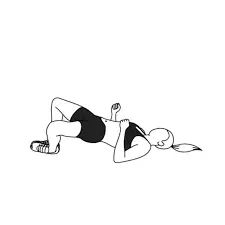
- Start with lying on your back with your knees should be bent.
- Put your feet flat on the ground.
- Your arms are crossed across your chest.
- Drop your knees out to the sides and place the soles of your feet closer.
- Your legs should be in a butterfly stretch posture.
- Elevate your hips off the ground and contract your glutes.
- Your buttocks should be in line with your knees and your shoulder blades.
- For a modified version, put your elbows alongside your body in order to provide excessive support.
- Pause and squeeze your glutes for 3 to 5 seconds in the raise position.
- gradually lower your glute.
Incorporating Frog Bridges into your workout routine can help strengthen the gluteus medius muscle, improve hip stability, and enhance overall lower body function.
Side-lying Hip Abduction
Side-lying Hip Abduction is an exercise that targets the gluteus medius muscle, which is located on the side of the hip. This muscle is important for stabilizing the pelvis and supporting the body during activities such as walking, running, and jumping.
- Start with lying on one side and the bottom leg should be bent to 45 degrees and the top leg should be straight.
- Place the hips and shoulders directly on top of one another.
- There is a strong chance to roll the hips forward or backward here.
- Setting up a wall directly behind can be a helpful positioning sign.
- Engage the gluteus medius to raise the upper leg in the direction of the ceiling.
- squeeze and hold the top position and then gradually decrease the leg.
- This is not a big movement and is very easy to overdo, which moves the work away from the gluteus medius to other surrounding muscles.
- Make sure to avoid any crunching with the trunk and raise the leg just high enough to experience the gluteus medius engagement.
- For more challenges, add an isometric hold at the top of the position.
To make this exercise more challenging, you can add resistance by using ankle weights or a resistance band around your thighs. You can also perform the exercise on a stability ball or foam roller to further engage your core muscles and challenge your balance.
Lateral Lunges
Lateral lunges are another exercise that targets the gluteus medius muscle. This exercise involves a side-to-side movement that activates and strengthens the gluteus medius, as well as other muscles in the lower body.
To perform lateral lunges, follow these steps:
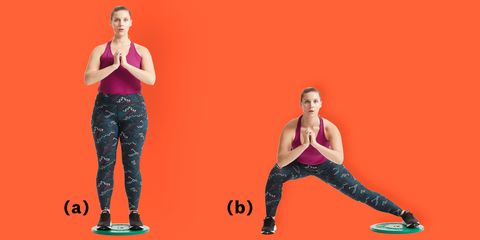
- Start with standing with your hands at your sides and your feet hip-width distance.
- If you want to create the challenge, keep a dumbbell on your right shoulder.
- Step out with your right leg toward the right.
- Move your weight toward your right side as you bend the right knee and drop into a side lunge.
- Maintain your left leg straight.
- When your right knee is bent to ninety degrees or more, press with your right foot to get back to the initiate position.
- Finish 10 repetitions.
- Change sides and do it again.
Breathe steadily throughout the exercise, exhaling as you lower into the lunge and inhaling as you push back up. Incorporating lateral lunges into your workout routine can help target and strengthen the gluteus medius muscle, improve hip stability, and enhance overall lower body strength
Single-leg squats
Single-leg squats, also known as pistol squats, are a more advanced variation of squats that specifically target and strengthen the gluteus medius muscle. Here’s a detailed explanation of how to perform single-leg squats for gluteus medius:

- Begin with your feet hip-width distance and keep both of your arms straight in front of your body at chest level.
- Move your body weight to the heel of your left foot and pick your right foot off the ground.
- Maintain your right foot up and in front of you, then squeeze your glutes to squat down on your left leg.
- Go back up to standing, and squat down again.
- Do 10 to 20 repetitions on your left leg then change to the right leg.
This exercise can be quite a balance challenge. If balancing on a single leg is too difficult, you can either hold your arms out to the side or squat down on a flat bench.
Side Planks With Side Leg Lifts
Side Planks with Side Leg Lifts is an exercise that targets the gluteus medius muscle, as well as the obliques and other core muscles. This exercise is great for improving hip stability and balance, as well as toning and strengthening the glutes.
To perform this exercise,
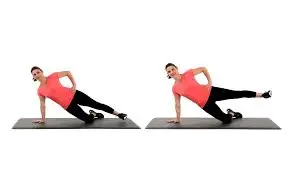
- Start in a low-side plank position. Make sure your elbow is exactly beneath your shoulder. your feet should be positioned one atop the other.
- Engage your core. Squeeze your glutes. gradually raise your top leg a few inches up. maintain the leg straight and other leg should be bend to maintain balance.
- Slowly lower back down.
- Complete 15 leg raises. maintain your hips during the whole movement.
- Switch sides and repeat.
To make this exercise more challenging, you can add a resistance band around your thighs or hold a dumbbell in your top hand. You can also perform the exercise on a stability ball or foam roller to further engage your core muscles and challenge your balance.
Weighted hip extension
Weighted hip extension for gluteus medius is an exercise that targets the gluteus medius muscle, which is located on the side of the hip. This exercise involves lifting one leg off the ground while keeping the other leg planted on the ground and then extending the lifted leg backward while holding a weight.
To perform this exercise,
- Begin on all fours with your knees directly beneath your hips and your hands should be beneath your shoulders.
- Maintain your belly is drawn in, your shoulders should be back and down, and your spine must be in a long line.
- Place a lightweight (3- to 8-pound) dumbbell in the crook of your left knee.
- Use the power of your right glute to balance and the power of your left glute to raise up your leg.
- Do the flexion of your foot and lift your knee up a little higher than your hips.
- Keep your balance by dividing your body weight equally over both hands and your lowered knee.
- Do it again 10 times and change sides.
- Do it again in 2 to 3 sets.
- Exhale as you raise your leg. Keep your neck long. To keep your ribs from sagging toward the ground, assume you are balancing a teacup on your back.
Weighted hip extension for gluteus medius is an effective exercise for strengthening the gluteus medius muscle, which is important for stabilizing the hips and preventing injury. It can also help improve overall hip strength and mobility.
Clam Shells
Clam Shells is a popular exercise that targets the gluteus medius muscle, which is located on the side of the hip. This exercise is great for improving hip stability and balance, as well as toning and strengthening the glutes.
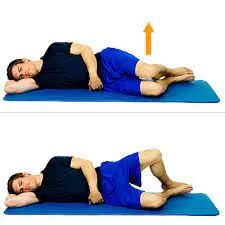
- Put a resistance loop band around your thighs, just over your knees.
- Start with lying on your left side.
- your knee should be positioned one atop the other.
- Bend your legs at a ninety-degree angle.
- Raise your right knee in the direction of the ceiling, pushing against the resistance of the band.
- Turn your hip to open your groin.
- For an excessive challenge, squeeze your heels closer and raise your feet a few inches off of the ground.
- Maintain your feet in this position during the whole exercise.
- Finish 10 to 15 repetitions.
- Change sides and do it again.
To make this exercise more challenging, you can add a resistance band around your thighs or hold a dumbbell in your top hand. You can also perform the exercise on a stability ball or foam roller to further engage your core muscles and challenge your balance.
Banded Knee Barbell Hip Thrust
The Banded Knee Barbell Hip Thrust is an advanced exercise that targets the gluteus medius muscle, as well as the gluteus maximus and hamstrings. This exercise is great for building strength and size in the glutes, as well as improving hip stability and balance.
How To Perform:
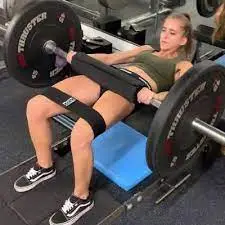
- Put a bench on the floor. Make sure it is padded.
- Sit with your back against the pad and your knees should be bent.
- Put a band around your knees and spread your legs.
- Keep a loaded barbell in the crease of your hips.
- Drive your feet into the floor and thrust your hips up until full extension.
- Focus on driving your knees out.
To make this exercise more challenging, you can add weight to the barbell or use a heavier resistance band. You can also perform the exercise with one leg at a time or on a stability ball to further engage your core muscles and challenge your balance.
Fire hydrant exercise
The fire hydrant workout is a very famous exercise that targets the gluteus medius muscle.

- To perform this exercise, initiate by means of getting down on all fours along with your palms and knees on the ground.
- Your fingers have to be at once beneath your shoulders, and your knees should be at once beneath your hips.
- After that, lift one leg out to the side whilst maintaining your knee bent at a ninety-degree attitude.
- Your foot should be in flexion, and your thigh must be parallel to the floor.
- Keep this position for a few seconds earlier than decreasing your leg and going into reverse to the provoke role.
- Repeat this movement many times before switching to the other leg.
- It is crucial to maintain the right shape at some stage in the exercising, which incorporates preventing your core engaged and your back instantly.
The fire hydrant exercise is an effective way to focus the gluteus medius muscle, which is essential for maintaining balance and stability during physical activity. This exercise can also help in preventing injuries by strengthening the muscles that provide support to the hip joint.
Lunges
Lunges are a great exercise for targeting the gluteus medius muscle, as well as the gluteus maximus and quadriceps. To perform lunges for the gluteus medius, follow these steps:

- Begin standing with your feet hip-width distance and your hands should be on your hips or at your sides.
- Take a large step forward with one foot, keeping your back straight and your core engaged.
- Lower your body down towards the ground by bending both knees, keeping your front knee directly above your ankle and your back knee pointing towards the ground.
- As you lower your body down, focus on pushing through your front heel to activate your glutes and hamstrings.
- Pause at the bottom of the lunge, then push back up to the starting position by straightening your front leg and bringing your back foot forward.
- Repeat on the other side, alternating legs for 10-15 repetitions per side.
To make lunges more challenging, you can hold dumbbells or a barbell in each hand, or perform walking lunges by taking steps forward with each leg instead of alternating sides.
Stretching of gluteus medius
Cross-legged glute stretch
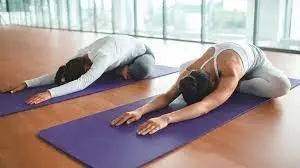
- Start with sitting on the floor cross-legged, and your left foot should be tucked into your right thigh.
- Your right leg must be in front of your left shin.
- outstretched your arms in front, slowly lean your torso forward over your crossed legs.
- Maintain the stretch for 30 seconds.
- Do it again this stretch with your right foot tucked into your left thigh.
If you like to deep stretch, lower your body toward your legs a little more. You could also extend your arms further. To make this stretch a little easier, do not lower down as far. Or Put your hands on a block to rest them comfortably.
Z sit
It is very similar to Pigeon Pose, which is often advisable to engage the gluteus medius in stretching, a Z-sit takes out a lot of the discomfort people can feel in Pigeon Pose, but is still the best hip opener.
Here is how to do it:
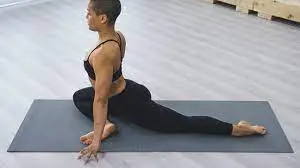
- Start with sitting comfortably on the floor.
- Place your left knee in a ninety-degree position in front of your body (as much as your body permits).
- Perform the same with your right leg, toward the back of your body.
- You can sit upright in this pose or tilt your torso forward in the direction of your front leg.
- Maintain the pose for 30 seconds, and then do it again on the other side.
Use your breath to help you go deeper into the stretch in this pose.
Figure 4 Stretch
There are so many different variations to this stretch, making it a perfect go-to for this muscle.
Here is how to do it:
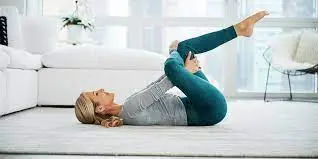
- Start with seating in an upright position and your spine should be neutral.
- Overlap your left and right legs.
- Put one hand on your knee and the other should be on your ankle.
- Tilt your torso forward to a position that is comfortable.
- Maintain this position for 5 breaths.
- Release your leg back to the initiate position, and do it again on the other side.
- Make sure you relax your muscles as you stretch. You might not be aware that you are creating tension between them.
Variations
You can perform this exercise in the supine position. That would be a great time to use a strap around your bent or lifted leg to help you in the stretch.
Placing your foot against a wall will make it easy to maintain the position as well. Shimmy as comfortably as you can toward the wall at this point, until your hips are directly above your knees.
Try standing if you wish to test your balance. As you sit in an imaginary chair, bend your knees and put your legs in the figure-4 posture.
Posterior Capsule Stretch
If your tightness experience is a little deeper than the glute, this stretch can be useful. The posterior outer capsule of the hip and the glute medius on the lateral side are best reached using this technique, according to Giordano.
How to Do It:
- Initiate with the quadruped position.
- Cross one leg behind the other, and stretch it as far as you can diagonally.
- Relax the foot and the knee of that leg into the ground, and shift your weight into the non-crossed leg.
- Lean until you experience a stretch at the side of your glute.
- Maintain this stretch for about 5 to 10 seconds before releasing the stretch.
- Do it again for 10 times.
Seated glute stretch
This simple stretch helps in relieving tightness in your glutes, hips, and back. If your hips want extra support, then sit on a yoga block or folded towel.
To do this stretch:

- Start with sitting on the chair and do the extension of your legs in front of you.
- Maintain your back straight, raise your left leg, and put your left ankle on your right knee.
- Lean a little forward to feel more of the stretch.
- Maintain for 20 seconds, then do it again on the other side
Downward-Facing Dog
Downward-facing dog is one type of traditional yoga pose. It is used to stretch many muscles, including your upper body muscles, hamstrings muscles, calves muscles, and glutes muscles.
To do this stretch:
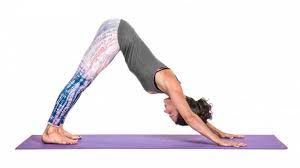
- Initiate with a pushup position, and hands shoulder-width distance and legs should be together.
- Keep your body stretched and engage your core muscles.
- Move your hips backward and upward, and create an upside-down “V” with your body.
- Little bend your knees and put your head in between your shoulders, maintain it in line with your spine.
- Reach your heels toward the ground but maintain them a little lifted.
- Maintain for 20 seconds.
- Go back to the initiate position.
- In order to take extra wrist support, you can put each hand on a yoga block.
If necessary, bend your knees. This could help in straightening your back and maintaining the “V” form of your body.
What is the Need to Stretch Your Gluteus Medius Muscles?
Due to the digital age and a “desk-bound” lifestyle, weak glutes are mostly a result of inactivity. Unfortunately, a sedentary lifestyle has negative effects on the hip and even the knee.
Stretching your glutes helps you on the path to getting stronger glute muscles. these are a few more benefits of extending your gluteus medius muscle group:
- Release tightness and tension
- It assists in enhancing the range of motion and flexibility.
- It saves you from future muscle tears and damages
- Helps in improving your posture
- Decrease and delay fatigue in the glute muscles
Benefits of gluteus medius exercise
Strengthening this muscle can have a number of benefits for overall health and fitness. Here are some of the key benefits of gluteus medius exercise:
- Improved balance and stability: The gluteus medius helps to stabilize the pelvis during movement, which is essential for maintaining balance and stability. Strengthening this muscle can help to improve overall balance and reduce the risk of falls and injuries.
- Reduced risk of hip, knee, and ankle injuries: Weakness in the gluteus medius can contribute to a number of injuries, including hip, knee, and ankle injuries. By strengthening this muscle, you can help to reduce the risk of these types of injuries.
- Improved athletic performance: Strong gluteus medius muscles are important for many athletic activities, including running, jumping, and changing direction quickly. By improving the strength and function of this muscle, you can improve your performance in a variety of sports and activities.
- Reduced lower back pain: Weakness in the gluteus medius can contribute to lower back pain by causing compensatory movements in other muscles. By strengthening this muscle, you can help to reduce lower back pain and improve overall spinal health.
- Improved posture: The gluteus medius plays a role in maintaining proper alignment of the pelvis and spine. By strengthening this muscle, you can improve your posture and reduce the risk of spinal injuries.
Overall, strengthening the gluteus medius is an important part of any fitness program. By incorporating exercises that target this muscle, you can improve your balance, stability, athletic performance, and overall health and well-being.
FAQ
What are the advantages of the gluteus medius?
Apart from leveling your hips, the gluteus medius has an important role in biomechanics, stability, and balance. during walking and running it assists in stabilizing your pelvis, in particular when you doing activities where you need to balance on a single leg.
What are the characteristics of a weak gluteus medius?
If you have a weak gluteus medius, the other side of your hip will drop itself whenever you move your leg upward or forward. it may not cause any pain at the start, but the pressure created on the gluteus medius muscle will be divided into the surrounding muscles and tendons which may impact your knees and your ankles.
How do you focus on Medius?
Point to target your gluteus medius muscles a minimum of two to three times a week.
Glute Bridging exercise.
Dumbbell Squat exercise.
Clamshell exercise.
Lateral Band Walk exercise.
Dumbbell Deadlift exercise.
Dumbbell Step-Up exercise.
Is gluteus medius called muscle or fat?
It is a big muscle covering the exterior surface of the ilium in between the anterior and posterior gluteal lines. The posterior fibers of the gluteus medius are inserted to create a flat tendon slanting downward and forward towards the super posterior facet of the greater trochanter of the femur.
What may happen from the weakness of the gluteus medius?
weakness of the gluteus medius can take part in excessive pronation of the foot and promote foot conditions like plantar fasciitis. For lower extremity movement to be mechanically effective, the gluteus medius muscle is essential.
Is walking good for gluteus medius?
Yes, by systematically changing your daily walk around, you can build up your glutes.
Reference
- Kester, S. (2019, August 26). 5 Ways to Stretch the Gluteus Medius. Healthline. https://www.healthline.com/health/gluteus-medius-stretch#figure-4
- Set, S. F. (n.d.). The Top 10 Exercises To Strengthen Your Gluteus Medius. SET FOR SET. https://www.setforset.com/blogs/news/10-best-gluteus-medius-strengthening-exercises
- Sayer, A., & Sayer, A. (2023, August 30). The 8 Best Gluteus Medius Exercises to Build Strength and Stability. Outside Online. https://www.outsideonline.com/health/training-performance/gluteus-medius-exercises/
- Cpt, K. S. (2020, June 27). The Best Exercises to Target the Gluteus Medius. Healthline. https://www.healthline.com/health/fitness-exercise/gluteus-medius-exercises#weighted-hip-extension
- Colletta, M. (2023, August 23). The 10 Best Gluteus Medius Exercises for Strength & Tone. Steel Supplements. https://steelsupplements.com/blogs/steel-blog/the-10-best-gluteus-medius-exercises-for-strength-tone
- Tirgar, P. (2022, February 26). Lateral banded walk exercise: Muscle worked, Health Benefits, How to do? Mobile Physiotherapy Clinic. https://mobilephysiotherapyclinic.in/lateral-banded-walk-exercise/
- Ritchey, C. (2023, May 11). A Physical Therapist Shares the 5 Best Stretches for Your Glute Medius. Men’s Health. https://www.menshealth.com/fitness/a43827721/gluteus-medius-stretch/
- Image: Frog Bridges. (n.d.). skimble.com. https://www.skimble.com/exercises/55447-frog-bridges-how-to-do-exercise
- Image: Barraclough, A. (2023, February 1). Single-leg squat: How to master this advanced single leg move. Runner’s World. https://www.runnersworld.com/uk/training/cross-training/a42669068/single-leg-squat/
- Image: C. (2019, November 1). Side Plank with Leg Lift – Curves. Curves. https://www.curves.com/monthly-challenges/side-plank-with-leg-lift
- Image: Admin, S. (2023, April 3). Clam Shells Exercise | Physical Therapy | Spear NYC. Spear Physical Therapy NYC. https://spearcenter.com/backtolife-exercise-side-lying-clam-shells/
- Image: Romine, S. (2023, March 7). How to Do a Figure 4 Stretch. BODi. https://www.beachbodyondemand.com/blog/figure-4-stretch
- Image: Kester, S. (2019, August 26). 5 Ways to Stretch the Gluteus Medius. Healthline. https://www.healthline.com/health/gluteus-medius-stretch#z-sit
- Image:Kester, S. (2019, August 26). 5 Ways to Stretch the Gluteus Medius. Healthline. https://www.healthline.com/health/gluteus-medius-stretch#cross-legged
- Image: Knee-banded Glute Bridge. (n.d.). skimble.com. https://www.skimble.com/exercises/49439-knee-banded-glute-bridge-how-to-do-exercise

